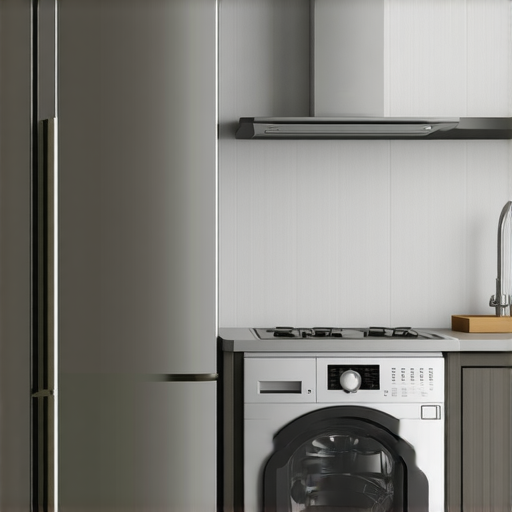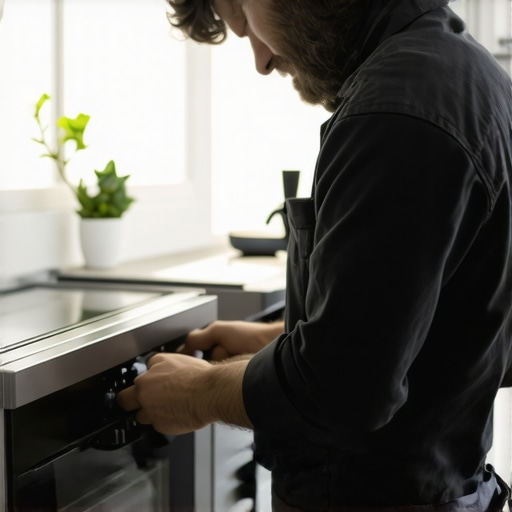My First Encounter with a Broken Oven: A Personal Story
I’ll never forget the day my oven suddenly stopped working right before a big family dinner. I was overwhelmed but determined to fix it myself. That experience sparked my journey into understanding the ins and outs of oven repair, which I want to share with you today.
Why Knowing Basic Oven Repair Tips Makes a Difference
From my experience, a little knowledge about common issues and their solutions can save you both time and money. Simple fixes like replacing a faulty thermostat or cleaning heating elements can restore your oven’s functionality without calling in a professional. Plus, understanding the essential parts involved helps in making informed decisions when shopping for replacements.
Essential Parts for Fast and Effective Oven Repairs
During my DIY attempts, I learned that some parts are absolutely vital for quick fixes. Components like heating elements, thermostats, igniters, and oven timers are often the culprits behind common problems. I always keep these in my repair kit because they’re the first things to check when my oven acts up. For reliable replacements, I turn to trusted sources like Appliance Parts Pros, which offers a wide selection of genuine parts at reasonable prices.
How to Identify When Your Oven Needs a Part Replacement
In my experience, signs like uneven heating, failure to turn on, or strange noises usually indicate a faulty component. Troubleshooting involves inspecting these parts visually and using a multimeter to test electrical continuity. Sometimes, just a quick swap of a worn-out heating element can bring your oven back to life. Remember, safety first—always unplug your appliance before attempting repairs.
What Are the Common Challenges in DIY Oven Repairs?
One challenge I faced was diagnosing the exact issue. Ovens are complex, with many interconnected parts. Consulting the user manual or online tutorials helped me understand how each component functions. Additionally, I found that patience and attention to detail are crucial. If you’re unsure, it’s wise to seek professional advice or service to avoid causing further damage.
Ever Wonder Why Ovens Fail and How to Prevent It?
Preventive maintenance is key. Regularly cleaning your oven and checking for loose wiring can prevent many common issues. Also, avoiding frequent door slamming and overloading the oven helps prolong its lifespan. For more tips on maintenance, check out this preventive maintenance guide.
If you’ve had similar experiences or tips, I’d love to hear your stories. Sharing knowledge helps us all become better at maintaining our appliances and saving money.
Understanding the Root Causes of Oven Failures: An Expert’s Perspective
Ovens are intricate appliances, and their failures often stem from a combination of factors like wear and tear, electrical issues, or improper usage. For instance, frequent power surges can damage sensitive components such as control boards or sensors. Additionally, accumulated grime and food residue can interfere with heating elements, leading to uneven cooking or complete failure.
Deep Dive into Common Faulty Components and Their Diagnostic Signs
As an expert, I’ve found that recognizing specific symptoms can guide effective troubleshooting. For example, a gas oven that ignites but refuses to stay lit often points to a faulty igniter or thermocouple. Conversely, an electric oven that doesn’t heat at all could be experiencing a broken heating element or a malfunctioning relay. Visual inspections combined with multimeter testing are essential steps in confirming these issues.
How Can Preventive Maintenance Save Your Oven’s Lifespan?
Preventive maintenance isn’t just about fixing problems—it’s about *anticipating* potential issues. Regularly cleaning oven components, especially heating elements and thermostats, prevents buildup that can cause overheating or electrical faults. Checking wiring connections for signs of corrosion or looseness can avert short circuits. Implementing routine inspections, at least every six months, can significantly extend your oven’s operational life.
What Are the Practical Challenges When Repairing Ovens at Home?
One of the biggest hurdles is distinguishing between minor glitches and actual component failures. Sometimes, what seems like a faulty heating element might just be a loose connection or a faulty control switch. Additionally, handling electrical components requires caution and proper tools. It’s crucial to consult manufacturer schematics or online repair guides, such as those from RepairClinic, to avoid unnecessary replacement or damage.
Moreover, understanding the safety protocols—like disconnecting power before opening the appliance—is paramount. Overlooking safety can lead to injuries or further damage to the oven.
Can Upgrading Certain Parts Improve Oven Performance and Longevity?
Absolutely. Upgrading components like the thermostat or sealing elements can enhance oven efficiency and consistency. For example, modern digital thermostats often provide more precise temperature control, reducing energy waste and uneven cooking. Moreover, replacing worn-out door seals prevents heat loss, which not only improves cooking results but also reduces strain on heating elements.
When considering upgrades, always choose high-quality, manufacturer-approved parts. Trusted suppliers like Appliance Parts Pros offer a wide selection of compatible, durable replacements that ensure your repairs stand the test of time.
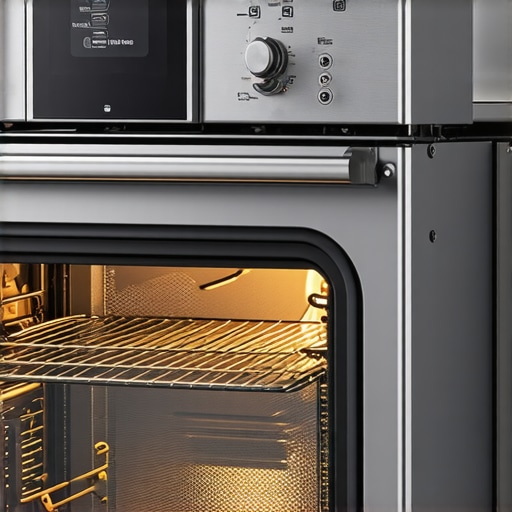
**Image Prompt:** Detailed illustration of oven parts with labels, highlighting common failure points like heating elements and thermostats, in a modern workshop setting.
Have you encountered unique oven problems or discovered innovative repair hacks? Share your experiences in the comments or suggest other topics you’d like me to cover. For further reading, explore our guide on preventive oven maintenance tips and keep your appliance running smoothly for years to come.
Venturing Beyond Basic Fixes: The Intricate Dance of Oven Components
Over the years, my journey into oven repair has revealed that understanding the subtle interplay between various parts is crucial. For instance, I’ve noticed that a malfunctioning thermostat often isn’t just a simple defective sensor but could be linked to wiring issues or control board failures. This realization came after I meticulously examined the wiring harnesses and circuit boards, uncovering corrosion or loose connections that weren’t immediately obvious. Recognizing these nuances has saved me from unnecessary replacements and deepened my appreciation for the oven’s complexity.
How Do Advanced Diagnostic Tools Empower Home Repair Enthusiasts?
In my experience, investing in tools like digital multimeters, thermal imaging cameras, and even specialized oven diagnostic kits has transformed my troubleshooting approach. These devices allow me to pinpoint issues with precision—detecting subtle electrical faults or uneven heat distribution that might evade simple visual inspections. For example, a thermal imaging camera helped me identify hotspots on heating elements, indicating partial failures before they caused complete malfunction. According to industry experts, such tools not only enhance diagnostic accuracy but also extend the lifespan of your appliances by preventing minor issues from escalating into major repairs (RepairClinic).
Is There a Hidden Cost to DIY Repairs That I Overlooked?
Absolutely. While I initially believed that DIY fixes would always be cost-effective, I soon realized that improper repairs could lead to safety hazards or further damage. For instance, using incompatible parts or misdiagnosing a problem can cause electrical shorts or reduce oven efficiency. Moreover, neglecting safety protocols—like double-checking that power is disconnected—can result in injury. It’s essential to balance the satisfaction of fixing your own appliance with the humility to seek professional help when needed. Sometimes, a consultation with a certified technician can save you time, money, and peace of mind.
Reflecting on Preventive Maintenance: A Personal Philosophy
Preventive maintenance has become a cornerstone of my philosophy. Regularly cleaning components, checking wiring integrity, and scheduling professional inspections have significantly extended my oven’s lifespan. I’ve found that setting a routine—such as every six months—helps catch minor issues before they escalate. This proactive approach is rooted in the understanding that appliances, much like us, benefit from consistent care. Sharing my experiences, I encourage fellow DIY enthusiasts to adopt a preventive mindset; it’s not just about repairs but about fostering a sustainable relationship with your appliances.
Inviting Your Personal Stories and Deepening Our Collective Knowledge
Every oven problem has its own story, and I believe that sharing these stories enriches our community. Have you encountered a particularly tricky issue or devised an innovative fix? Your insights could help someone else avoid common pitfalls. Feel free to comment below or explore related topics like preventive oven maintenance tips. Together, we can build a repository of knowledge that empowers us all to maintain our appliances better and more confidently.
<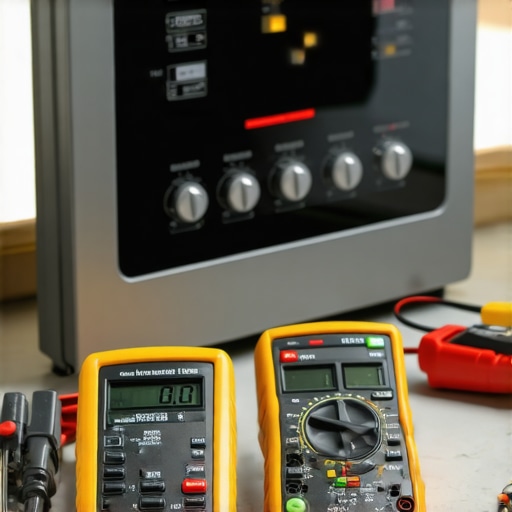 >
>
**Image Prompt:** Close-up of oven control panel with diagnostic tools and multimeter, illustrating advanced troubleshooting in a home workshop.
Deciphering the Complex Interplay of Oven Components
As I delved deeper into oven repair, I realized that understanding the nuanced interactions between various parts is paramount. For example, a malfunctioning thermostat isn’t merely a defective sensor; it often involves complex wiring issues or control board malfunctions. During one instance, meticulous examination of wiring harnesses revealed corrosion and loose connections that initially went unnoticed but were responsible for inconsistent temperature regulation. Recognizing these intricacies has empowered me to perform more precise repairs, minimizing unnecessary part replacements and extending the lifespan of my appliances.
Harnessing Advanced Diagnostic Tools for Precision Troubleshooting
Over the years, investing in sophisticated diagnostic equipment has revolutionized my approach. Digital multimeters, thermal imaging cameras, and specialized oven diagnostic kits enable me to detect electrical faults and heat distribution anomalies with remarkable accuracy. For instance, thermal imaging uncovered hotspots on heating elements, signaling partial failures long before total breakdowns occurred. Industry experts underscore that such tools not only enhance diagnostic accuracy but also prevent minor issues from escalating, as highlighted by RepairClinic’s comprehensive troubleshooting guides (RepairClinic).
What Are the Hidden Costs of DIY Oven Repairs That I Overlooked?
Initially, I believed DIY repairs were always cost-effective, but I soon encountered hidden pitfalls. Using incompatible parts or misdiagnosing problems can lead to electrical shorts, reduced efficiency, or even safety hazards. For example, installing a subpar thermostat resulted in inconsistent temperature control, necessitating further repairs. Moreover, neglecting safety protocols—such as ensuring the appliance is unplugged—can cause injuries. Consulting professional technicians or thorough online resources can mitigate these risks and save time and money in the long run.
Integrating Preventive Maintenance into Your Routine for Long-Term Benefits
My personal philosophy emphasizes proactive care. Regularly cleaning components, inspecting wiring, and scheduling professional check-ups every six months have dramatically improved my oven’s durability. This routine not only catches minor issues early but also fosters a sustainable relationship with the appliance. Preventive maintenance extends beyond cleaning; it involves understanding component wear patterns and addressing them before failure. Embracing this mindset transforms oven care from reactive fixes to strategic longevity planning.
Engage with My Advanced Troubleshooting Techniques and Share Your Experiences
Have you experimented with high-tech diagnostic tools or discovered unique repair hacks? Sharing your insights enriches our community and helps others navigate complex repairs more confidently. I invite you to comment below with your stories or explore our detailed guide on preventive oven maintenance tips. Together, we can cultivate a wealth of knowledge that empowers us all to maintain our appliances with expert precision and confidence.
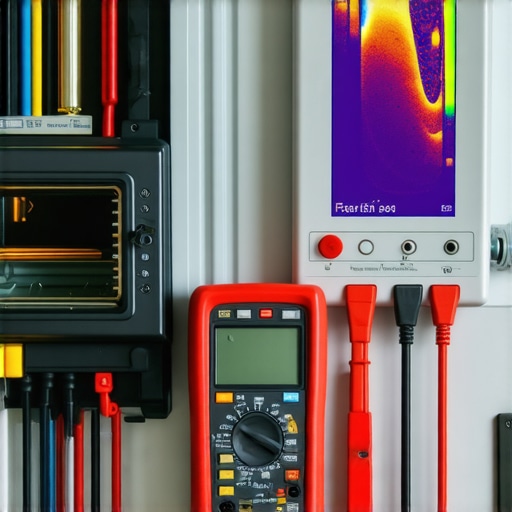
**Image Prompt:** Close-up of digital multimeter testing oven wiring with thermal imaging overlay, in a modern workshop setting.
Things I Wish I Knew Earlier (or You Might Find Surprising)
The Hidden Complexity of Oven Components
When I first started fixing ovens, I underestimated how interconnected the parts are. A seemingly simple issue like uneven heating often involved multiple components, from wiring to sensors. Troubleshooting became a puzzle that required patience and a keen eye for detail. I wish I had known that understanding these subtle interactions could save me time and prevent unnecessary replacements.
The Importance of Safety Protocols
One of my biggest lessons was never to overlook safety. Unplugging the oven before opening it was obvious in theory but easy to forget in practice. A small oversight almost led to a minor electric shock. Now, I always double-check that everything is disconnected. Safety first, always—this simple step protects you and your home.
DIY Repairs Can Be Costly if Not Done Properly
I learned that rushing into repairs without proper knowledge can lead to more problems. Using incompatible parts or misdiagnosing issues resulted in further damage and higher costs. Consulting reliable guides and knowing when to seek professional help has been a game-changer for me. Sometimes, the peace of mind is worth the extra expense of a professional.
Preventive Maintenance Saves Money and Extends Life
Regular cleaning and inspections have helped me avoid major breakdowns. I now schedule routine checks, especially of heating elements and wiring, every six months. This proactive approach keeps my oven running smoothly and prolongs its lifespan. Prevention, I’ve found, is much better than repair.
Upgrading Parts Can Improve Performance
Replacing outdated components like thermostats or door seals has noticeably improved my oven’s efficiency. Modern digital thermostats offer more precise temperature control, making cooking more consistent. Upgrading quality parts from trusted sources like Appliance Parts Pros has been a smart investment.
Resources I’ve Come to Trust Over Time
- Appliance Parts Pros: A reliable source for genuine replacement parts. Their wide selection and detailed guides have helped me troubleshoot effectively.
- RepairClinic: Offers comprehensive tutorials and troubleshooting advice, which I’ve used countless times to diagnose complex issues.
- HomeAdvisor’s Preventive Maintenance Guide: A fantastic resource that emphasizes the importance of routine care to extend appliance lifespan.
- Manufacturer’s Manuals: Always my go-to for specific model information and safety instructions, ensuring I don’t miss critical details.
Parting Thoughts from My Perspective
Fixing my oven has been a rewarding journey filled with learning and patience. Key takeaways include understanding the complexity of oven components, prioritizing safety, and recognizing when professional help is necessary. I encourage anyone tackling DIY repairs to stay curious, be cautious, and never underestimate the value of preventive maintenance. If this resonated with you, I’d love to hear your thoughts or stories about your own repair adventures. Sharing experiences helps us all become better at maintaining our appliances and saving money. Feel free to drop your insights in the comments or explore more about preventive oven maintenance tips. Happy repairing!
